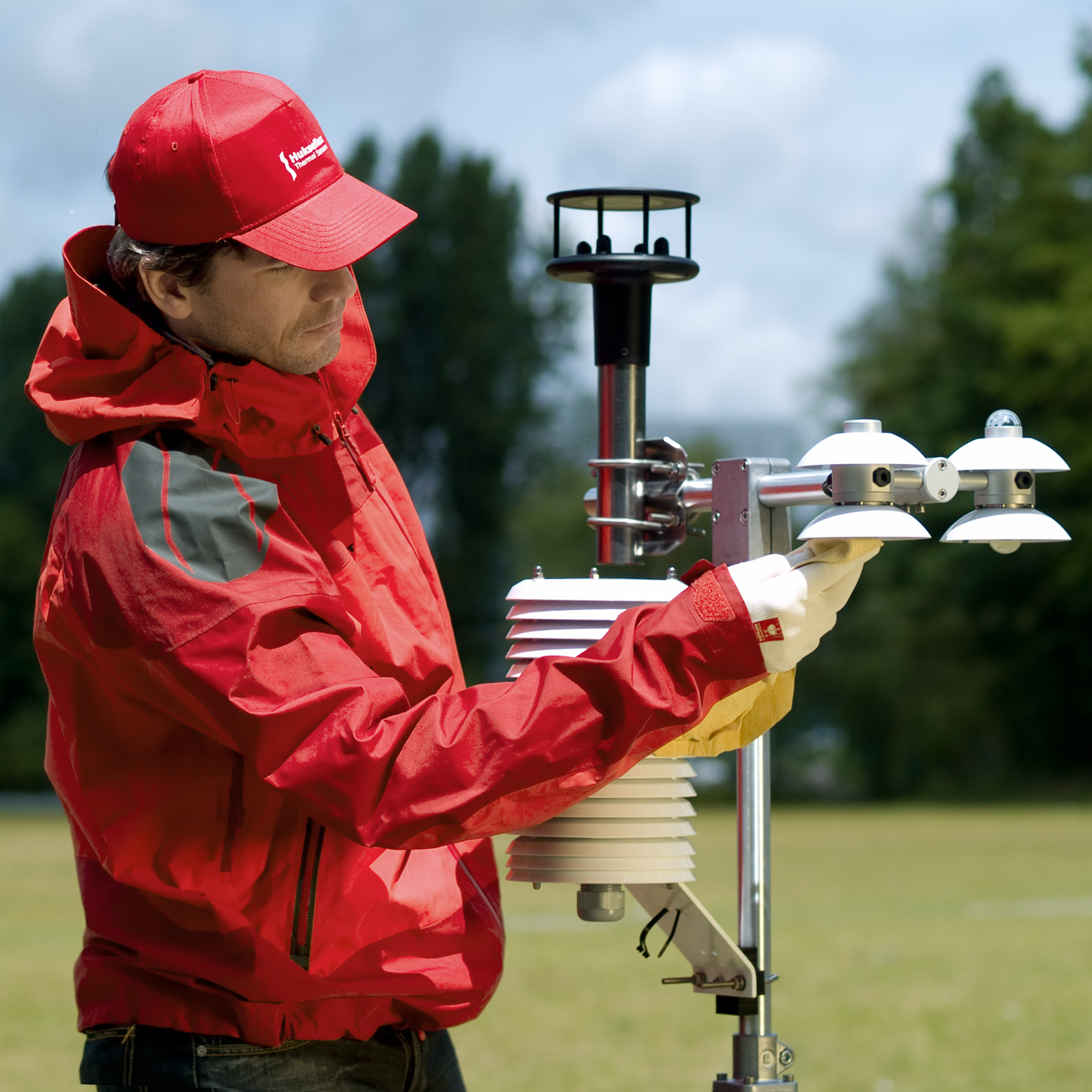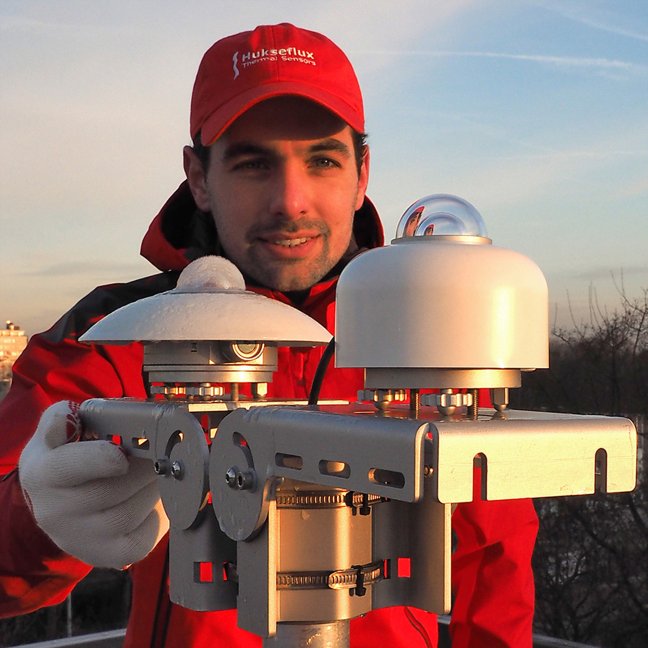Measuring albedo of finite samples
Tips and tricks to get the most out of your albedometer measurement
The measurement of the albedo, or reflectance, of surfaces is gaining popularity. Bifacial PV modules aim to use both the global solar radiation and the reflected solar radiation to provide electricity. As these modules are often mounted close to the surface, the albedo of smaller samples (areas of ground surface) becomes relevant. Downfacing pyranometers are suitable to make this measurement, but you must carefully consider the installation height. This note delves into the theory of the albedometer measurement, to help you get the most out of your albedometer.
Read the full article here: Measuring albedo of finite samples - note (PDF)
Introduction
Albedometers are instruments that measure global and reflected solar radiation and the solar albedo, or solar reflectance, of surfaces. An albedometer is composed of two pyranometers, the downfacing one measuring reflected solar radiation.
The classic application is in energy balance studies, studying albedo variations of large fields over several years.
With the rise in popularity of bifacial PV modules, there is an increased demand to measure the albedo of finite samples. This is certainly possible with pyranometers, but there are a few things to keep in mind.
Standard recommendations
ISO/TR 9901⁽¹⁾ states that the ground beneath the downfacing pyranometer should have a covering which is typical of the desired measurement conditions. For general energy balance studies, ISO/TR 9901 states that the height above the ground should be between 1.5 and 2 m. The Baseline Surface Radiation Network uses installation heights of 30 m to get a field of view that is comparable to a satellite pixel⁽²⁾.
Mounting structure
ISO/TR 9901 states that the mounting device should be designed to minimize reflections or shadows in the field of view of the albedometers. WMO⁽³⁾ says that mounting devices should be designed to cause less than 2 % error in the measurement.
To avoid reflections, masts are painted with non-reflective paint. To minimize shading, albedometers are mounted on booms extending towards the equator.

Detailed considerations
To make sure that the field of view of the downfacing pyranometer is largely filled by the sample of interest, an installation height of less than 2 m is required for smaller samples.
Ease of maintenance / inspection is also a reason to consider a low installation height.
Summary
When measuring small samples a low installation height makes the measured albedo more representative for the sample. At the same time, the shadow cast by the pyranometer can lead to significant errors if you mount it too close to the surface.
Worked example
Let’s say you want to measure the albedo of a sample with a radius of 2 m, using an SRA20 albedometer.
To achieve a situation where 97 % of the measurement signal is coming from the sample, install the downfacing pyranometer at a height of 0.5 m. This can cause significant self-shading errors, up to 6 % for low zenith angles. A solution is to use the SRA20 without its sunscreen. This reduces the measurement error due to self-shading by a factor 3.
Conclusion
Albedometers are suitable to measure the reflectance of finite samples.
All the normal recommendations for performing an albedometer measurement apply.
To improve the measurement, carefully consider the installation height. This is a trade off between representativeness and errors due to self-shading.
...
Read the full article here:
Measuring albedo of finite samples - note (PDF)
References
1. ISO (1990) ISO/TR 9901:1990 Solar energy -- Field pyranometers -- Recommended practice for use
2. McArthur L.J.B. (2005) WMO/TD-No. 1274 Baseline Surface Radiation Network (BSRN). Operations Manual. Version 2.1
3. WMO (2017) WMO-No. 8 WMO Guide To Meteorological Instruments And Methods Of Observation









